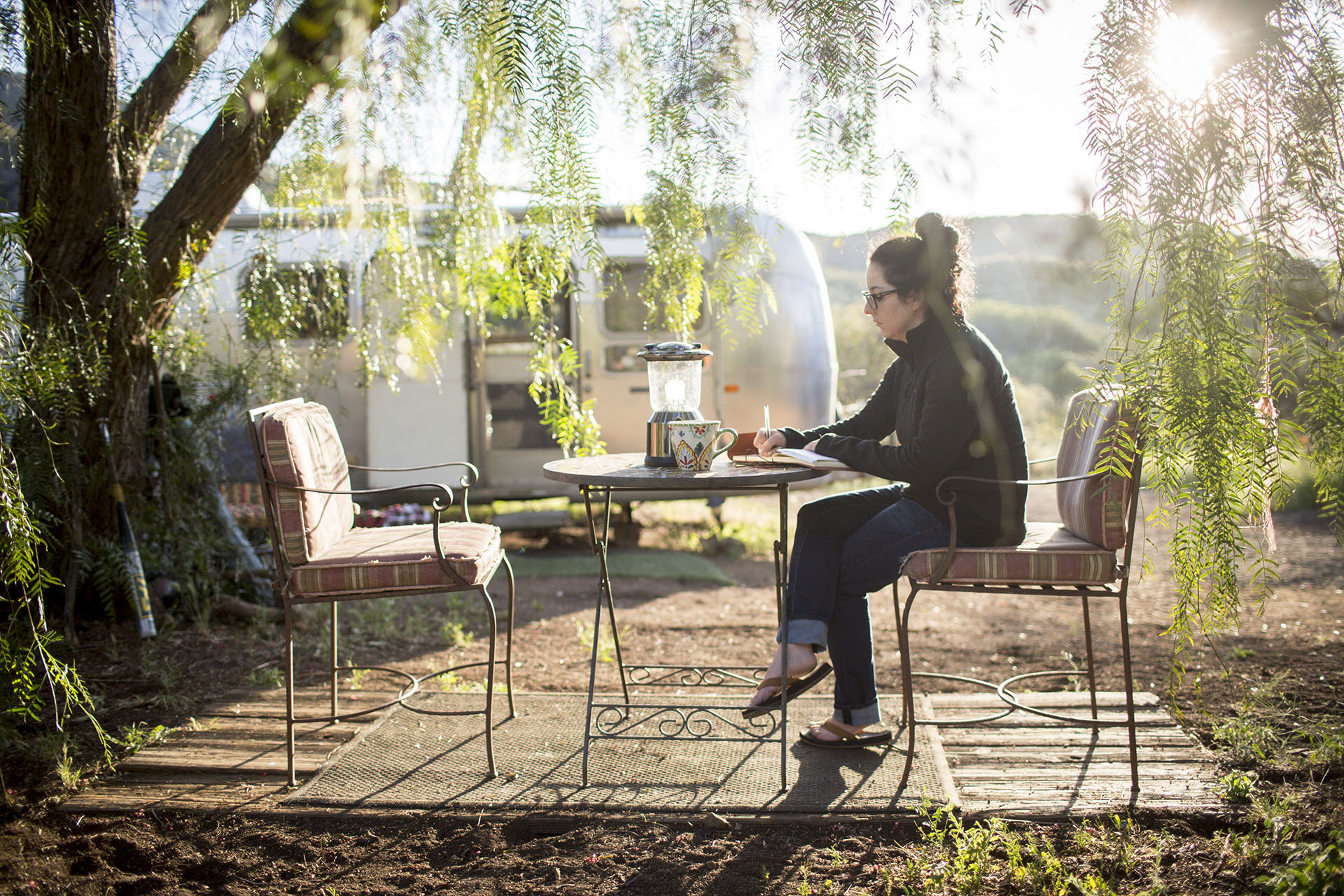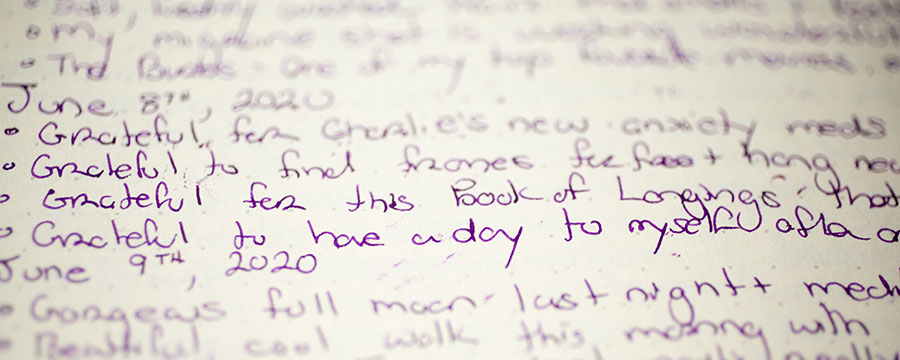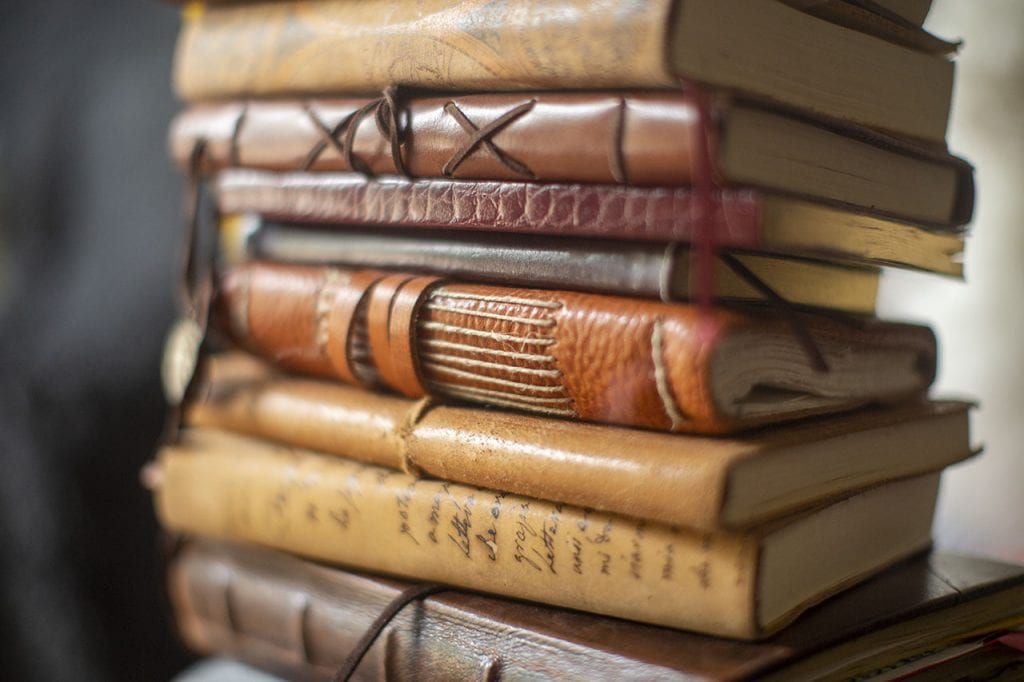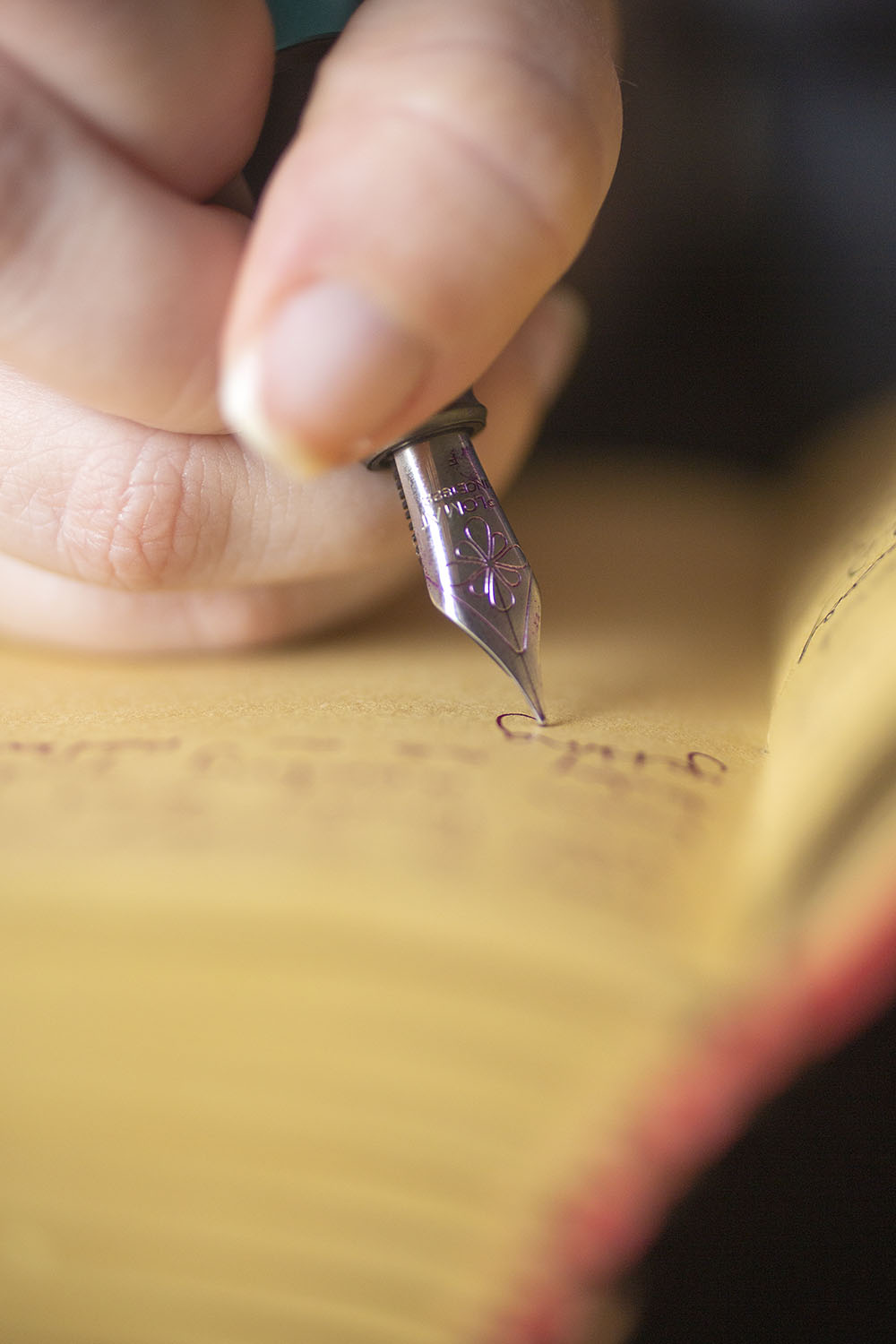A love affair with journaling: Why it’s the best thing I’ve ever done for myself

Written by Melissa Farley
I believe in the power of the written word. To me personally, that means the power to record my truth. As adults, so often throughout the day we filter ourselves – we stop ourselves from saying something that we really believe so as not to offend others or cause conflict, we stop ourselves from expressing honest feelings because it’s not the right place or time (like when you get emotional during a work meeting) and we edit tiny little interactions each and every moment to be more acceptable for societal standards.
But when I write, all that goes away. I can say and feel whatever I want and whatever is truly inside.
That is power.
That is freeing.
That is healing.
Journaling has always been a significant part of my life. I have bookshelves full of filled journals; I go through about two a year. I realize that not everyone enjoys writing, but I can’t say enough about how this daily practice has benefited my life. Plus, there’s so many different ways to approach journaling!


Free Writing or Automatic Writing
This is what I do. Basically, there are no rules. I fill blank pages with whatever rises to surface. Petty grievances, mundane daily tasks, deep philosophical wonderings, cravings for mac & cheese and tuna fish…. Literally anything that bubbles to the surface it goes on the page.
This is a clarifying and completely cathartic process for me. I feel that I’ve opened the flood gates and let it all out so I’m not holding on to anything and letting it fester or build to unhealthy levels of resentment or grief. If I need to revisit the same topic everyday for 10 days straight, I do it. I just write it out.
Often times I can’t read my own handwriting and I very rarely go back and reread these entries, instead I view it as a great purge of negativity, toxicity and anything else that’s clogging my creativity or ability to be fully present in life.
There’s an argument made for this type of journaling in a fantastic book called “The Artist’s Way” by Julia Cameron. In this book she encourages artists to commit to something called Morning Pages which is a “daily ritual of writing three full page of stream-of-conscious.” This habit allows you to tap into your natural flow of creativity and awareness and while this can be hugely helpful for artists, it can also help people gain focus and clarity in other aspects of life. The point is to start paying attention, start listening to what is inside and trust that it will guide you.
“Each Bullet Journal becomes another volume in the story of your life. Does it represent the life you want to live? If not, then leverage the lessons you’ve learned to change the narrative in the next volume.”
― The Bullet Journal Method: Track the Past, Order the Present, Design the Future
Bullet Journaling
Let me just start off by saying that my husband loves this technique while I hate it. BUT it has extreme value. Bullet journaling is more of an organizational system than anything. While there are components that allow for writing or meditation, it is more of a tool to keep track of your life and it was created by Ryder Carroll, a designer who has a learning disability and found this to be the most effective way of managing his life. Given this prospect, I had assumed that I would love bullet journaling because I love paper planners and this is like a planner on steroids. Here are all of the basic elements of a bullet journal:
Index:
This is the first page of your bullet journal and ultimately operates like a table of contents.
Rapid Logging:
This is your record of tasks. It is encouraged you use notations, abbreviations and short sentences whenever possible to log things like business meetings, to-do items, reminder notes, etc.
Logs:
I think this is the part my husband likes best because it enables you to keep track of your progress. The creator suggests you implement a future log, a monthly log and daily log. In these logs you will keep track of what needs to get done.
Collections:
This is exactly what it sounds like! You create a collection for any areas of focus you’d like to start taking action on. For example, you might create a reading list collection, a yoga practice collection or places you’d like to travel to collection.
Migration:
This is the process of transferring any uncompleted tasks into your current daily or future log. The purpose of this is to keep the task top of mind. An added plus is that this habit naturally initiates mindfulness. You begin to evaluate what tasks are actually important or necessary to you and what tasks you can let go of.
Ryder Carrol wrote a book on journaling called: The Bullet Journal Method: Track the Past, Order the Present, Design the Future.
Over 11 million people have viewed this video by Bullet Jounral creator Ryder Carrol.
Carroll and notebook maker Leuchtturm teamed up to make this journal.
I found the process too confining and overwhelming. I didn’t like having my planner and my journal in the same place essentially. And if you look on Pinterest at Bullet Journal ideas you will be presented with works of art. Since I tend to be a bit competitive, I found myself spending more time on trying to set up gorgeous Bullet Journal formats than journaling. But I am a rarity, as millions of people love and appreciate this approach.
For some really cool tips, example and stunning layouts, I highly suggest you check out this blog: LittleCoffeeFox.com

It feels like bonus happiness points whenever you can include other people on your gratitude journey.
A Gratitude Journal
Practicing gratitude is so, so good for you. It is scientifically proven that the regular practice of gratitude can lower your risk for heart disease, boost your immune system, reduce levels of stress and give your brain an actual dose of happiness! You cannot feel bad, mad, jealous, angry or hurt while you are in the act of showing or expressing gratitude. It is one of the best things you can do for yourself to create an immediate shift in your daily level of happiness.
 Plus, it’s so easy! It doesn’t matter if you do it in the morning, evening or on a lunch break. All you have to do is have a journal and each day list out 3-5 things you’re grateful for. They don’t have to be big things either. You can be thankful for the smell of your coffee roasting that morning, or maybe you saw a hummingbird in your backyard or maybe your kids didn’t scream when they woke up and you actually got to have a quiet start to the day.
Plus, it’s so easy! It doesn’t matter if you do it in the morning, evening or on a lunch break. All you have to do is have a journal and each day list out 3-5 things you’re grateful for. They don’t have to be big things either. You can be thankful for the smell of your coffee roasting that morning, or maybe you saw a hummingbird in your backyard or maybe your kids didn’t scream when they woke up and you actually got to have a quiet start to the day.
I don’t know if this part is scientifically proven, but it feels like bonus happiness points whenever you can include other people on your gratitude journey. Like being thankful your husband took the trash out without you even asking him to or being thankful that your coworker brought you in a donut for breakfast or grateful that your neighbor grew such gorgeous sunflowers in their front yard for the whole neighborhood to appreciate.
An Intentions Journal
This one is a bit new to me and I love it. I use a journal that was sent to me in the Lunarly Box. This specific one aligns with the lunar cycle, but I don’t think that’s necessary if that’s not really your thang. What I love about it is that at each new phase it gives me prompts to think about and set meaningful, actionable intentions for myself.
What things and accomplishments do I have to celebrate in my life?
What can I let go of that is no longer serving me?
What areas of abundance do I want to welcome into my life?
What steps can you take to align yourself more closely with your dreams?

The One Sentence Journal
This was an idea that stemmed from Hemmingway quote about writing just one true sentence each day and it was again made popular more recently by Gretchen Rubin during her Happiness Project. There are a couple different ways to go about this:
In the morning, write one thing you’re hopeful for.
In the evening, write one thing based off of your reflections of the day.
In the evening, write down the thing that you remember most vividly from the day. This is the time capsule approach.
Use a journal that has daily quotes, prompts or verses to inspire your one sentence.
Commemorative Journal
This is where you pick a day or maybe two that holds special meaning to you to write about your life – where you’re at right now and what you hope for in the upcoming year. My husband and I both do this on our birthdays and on the first of the year. We keep these entries separate from our main journal because it makes it easier to look bad and re-read past entries so you can see what you thought would happen and where you actually are now.
What you’ll find is that we are incredibly bad at predicting our own futures and often times we think things are going to be much worse than they actually are. It is a humbling and rewarding exercise.
Make it Meaningful
However you decide to journal, make it meaningful for you. Journaling is one of the most personal things you can do, so the method and the journal itself should resonate with you. One of my favorite parts of this journey is picking out a new journal. I just love wandering into old book shops or paper stores, the smell of fresh, soft leather, the feeling of handmade pages at my fingertips, picking out inks that match my mood for the day. It is all so utterly intimate and one of the few gifts I feel I give myself.


0 Comments